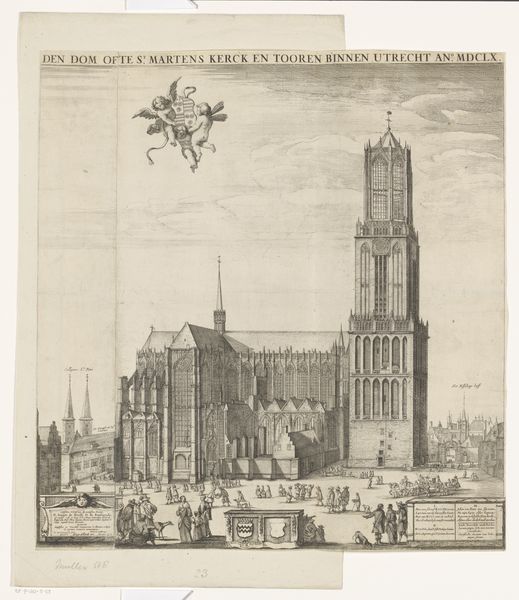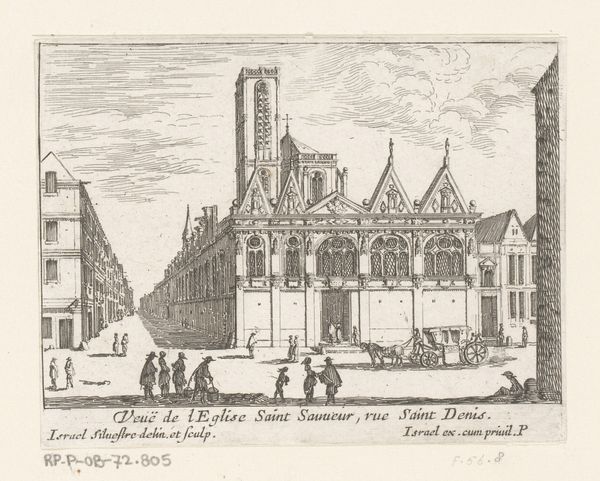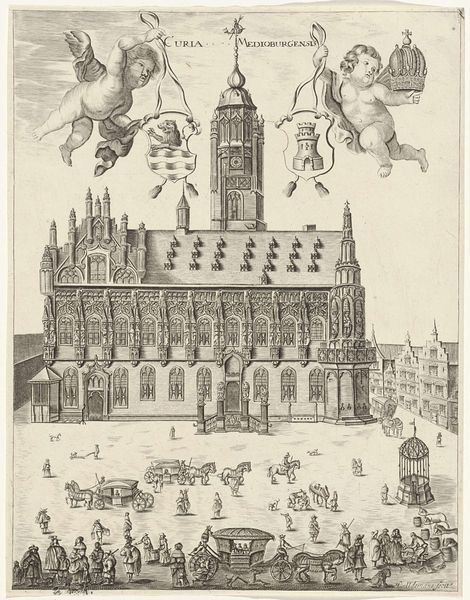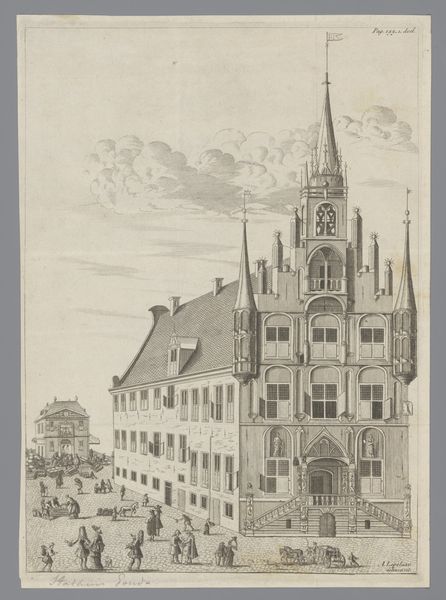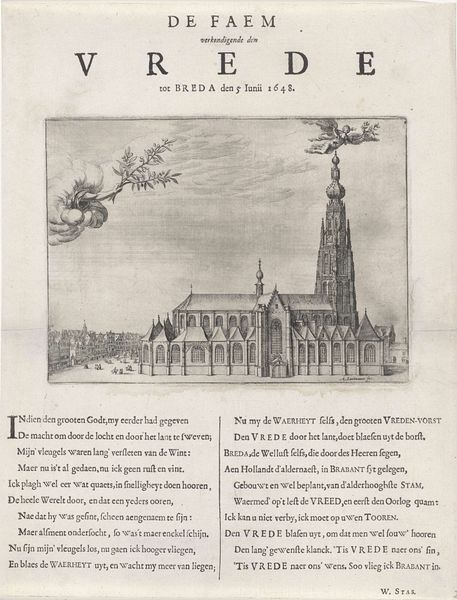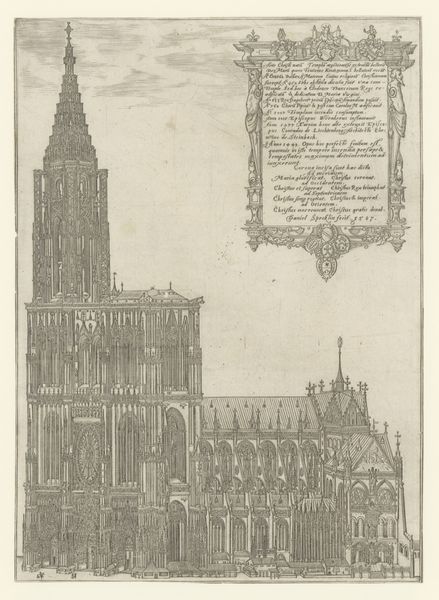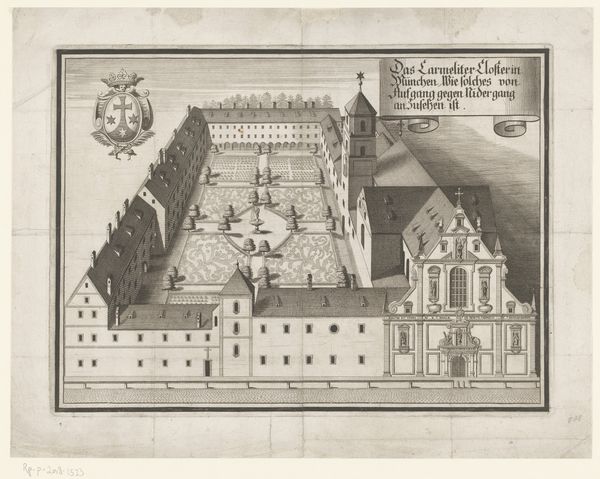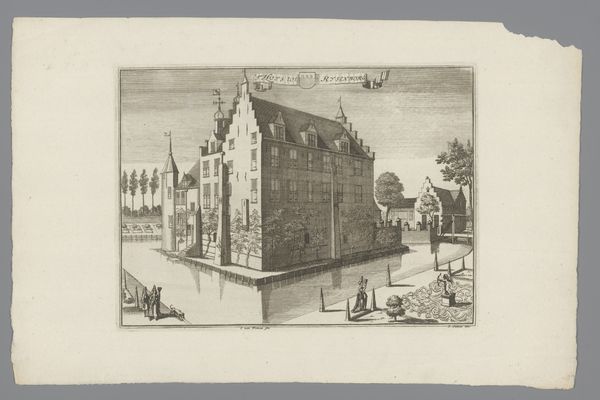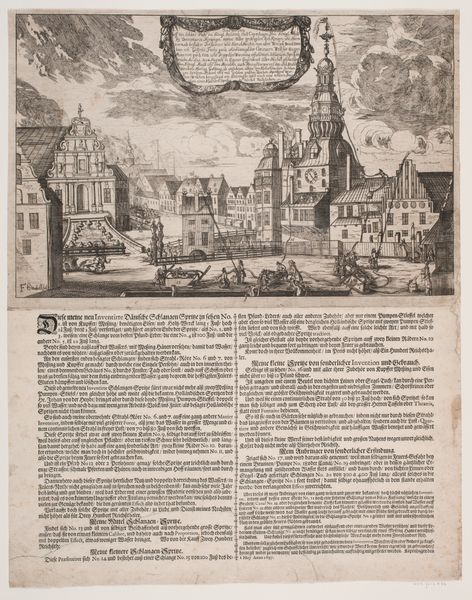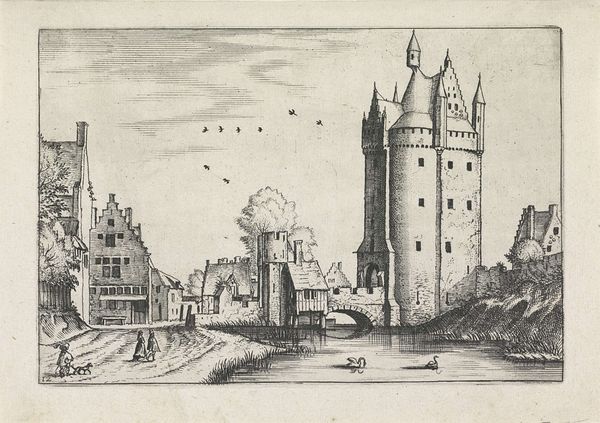
The New Church of the Beautiful Virgin at Regensburg c. 1520
0:00
0:00
print, woodcut, architecture
# print
#
form
#
woodcut
#
line
#
cityscape
#
northern-renaissance
#
architecture
Dimensions: image: 64.8 x 53.5 cm (25 1/2 x 21 1/16 in.) sheet: 72 x 63.2 cm (28 3/8 x 24 7/8 in.)
Copyright: National Gallery of Art: CC0 1.0
Editor: This is Michael Ostendorfer's "The New Church of the Beautiful Virgin at Regensburg," created around 1520 using woodcut. The level of detail is amazing. What jumps out to me is the contrast between the divine figures floating above and the bustling city life below. What's your take? Curator: Well, let’s focus on the woodcut itself. Consider the labor involved in carving those intricate lines, the specific types of wood available, and the skill required to transfer the image onto paper. We are looking at the cultural value placed on meticulous craftsmanship. Also, it's a print. Editor: A print, yes, it reminds me how accessible artwork like this would have been. Curator: Exactly! Think about the function of printmaking at the time, it enables a form of mass production of images. Its relationship with consumption of religious ideologies is key here. This cityscape depicts architectural ambition in service of a particular religious ideal that is distributed widely for profit. Does that give you something else to think about? Editor: It does. I never considered the business and social contexts of making religious art at the time, just the theology. Curator: Exactly. And what materials were being consumed, and how readily available were they to Ostendorfer? Editor: So the limitations of the wood and the tools available actually helped determine how he rendered his cityscape. I guess it helps ground the image from an ethereal ideal, making the spiritual grounded in reality? Curator: Precisely. By considering the material realities, we move beyond just admiring the picture to understand the complex world in which it was produced and consumed. We now better understand Ostendorfer's world through how he worked.
Comments
No comments
Be the first to comment and join the conversation on the ultimate creative platform.


